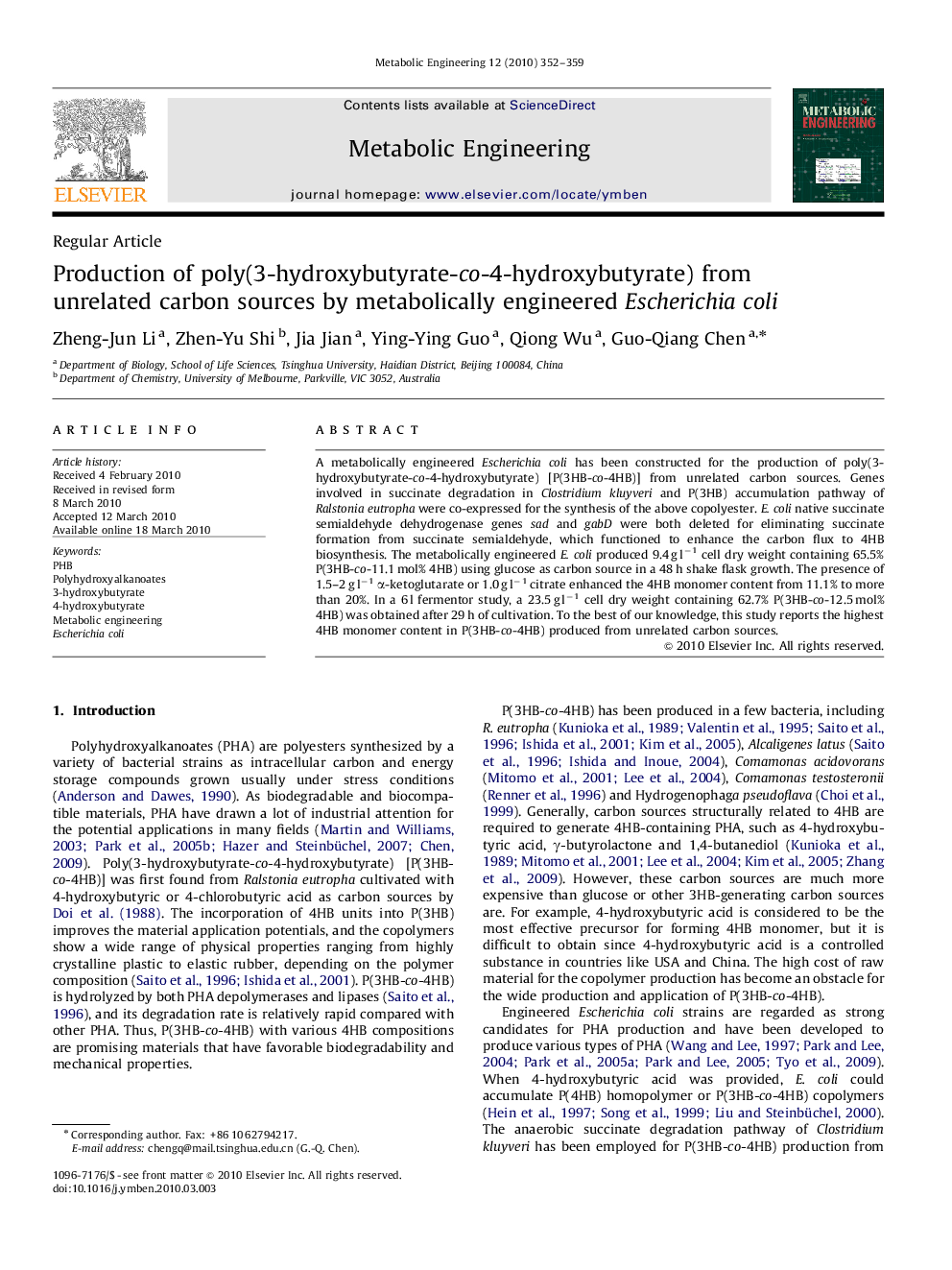| Article ID | Journal | Published Year | Pages | File Type |
|---|---|---|---|---|
| 31725 | Metabolic Engineering | 2010 | 8 Pages |
A metabolically engineered Escherichia coli has been constructed for the production of poly(3-hydroxybutyrate-co-4-hydroxybutyrate) [P(3HB-co-4HB)] from unrelated carbon sources. Genes involved in succinate degradation in Clostridium kluyveri and P(3HB) accumulation pathway of Ralstonia eutropha were co-expressed for the synthesis of the above copolyester. E. coli native succinate semialdehyde dehydrogenase genes sad and gabD were both deleted for eliminating succinate formation from succinate semialdehyde, which functioned to enhance the carbon flux to 4HB biosynthesis. The metabolically engineered E. coli produced 9.4 g l−1 cell dry weight containing 65.5% P(3HB-co-11.1 mol% 4HB) using glucose as carbon source in a 48 h shake flask growth. The presence of 1.5–2 g l−1 α-ketoglutarate or 1.0 g l−1 citrate enhanced the 4HB monomer content from 11.1% to more than 20%. In a 6 l fermentor study, a 23.5 g l−1 cell dry weight containing 62.7% P(3HB-co-12.5 mol% 4HB) was obtained after 29 h of cultivation. To the best of our knowledge, this study reports the highest 4HB monomer content in P(3HB-co-4HB) produced from unrelated carbon sources.
